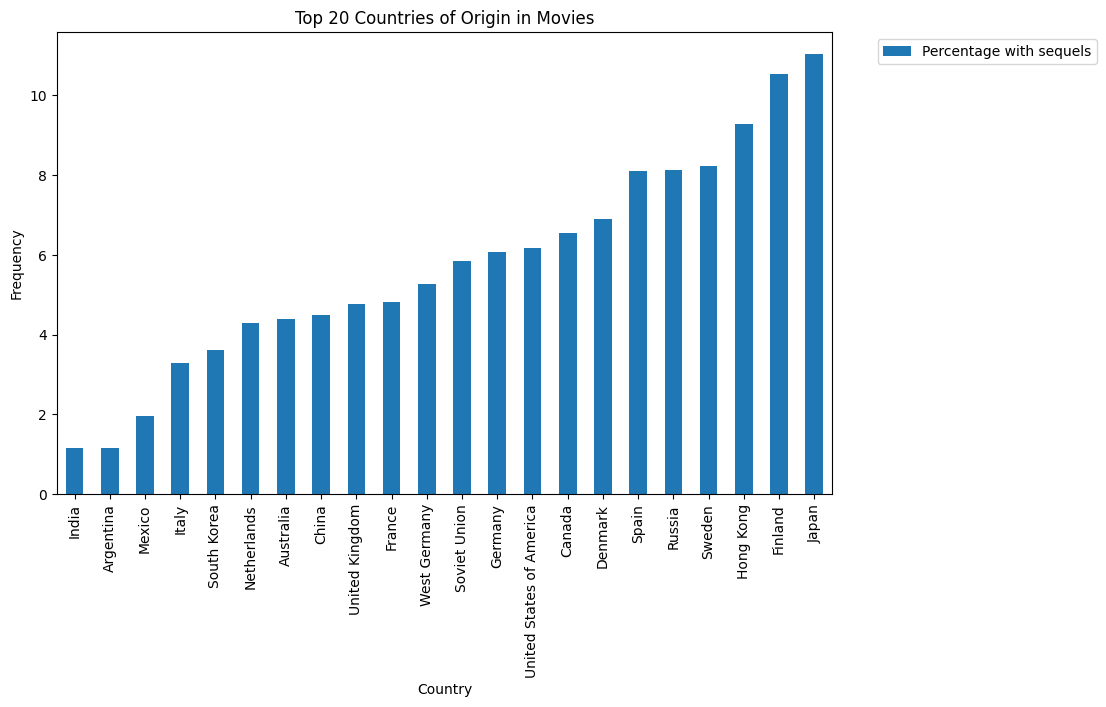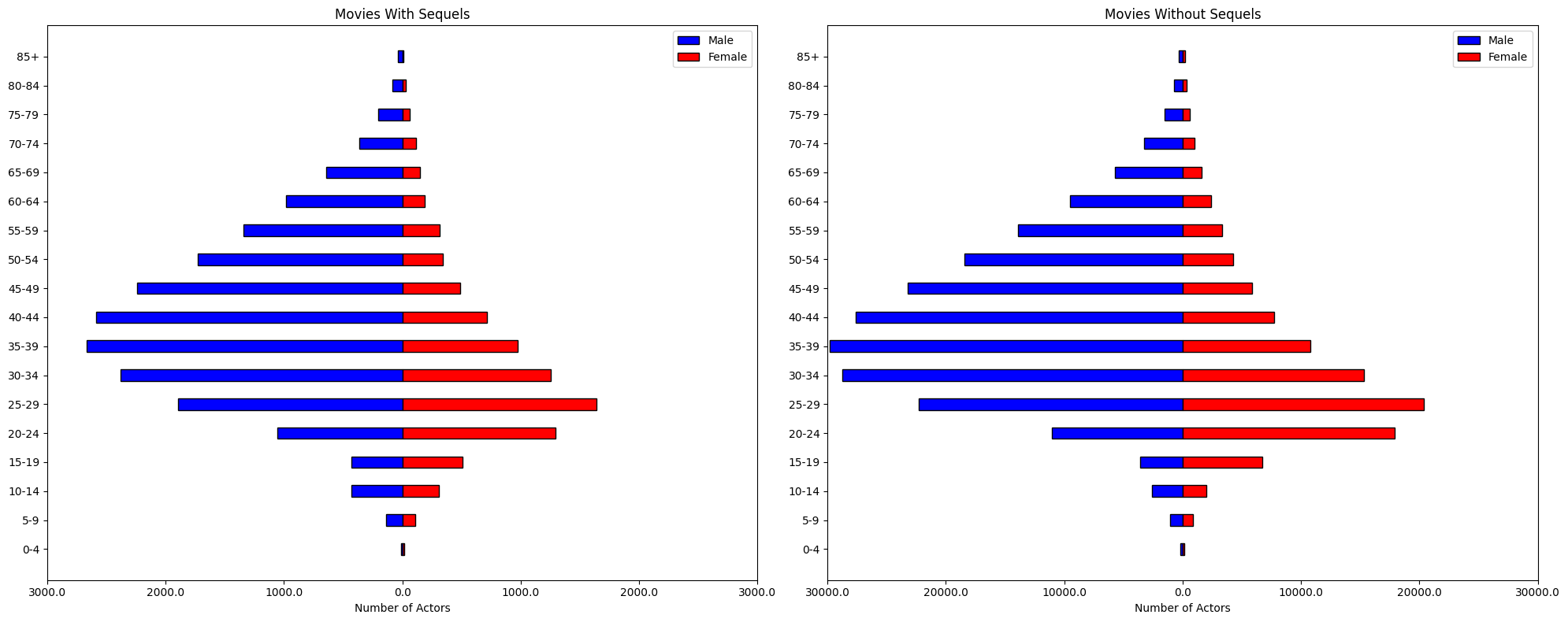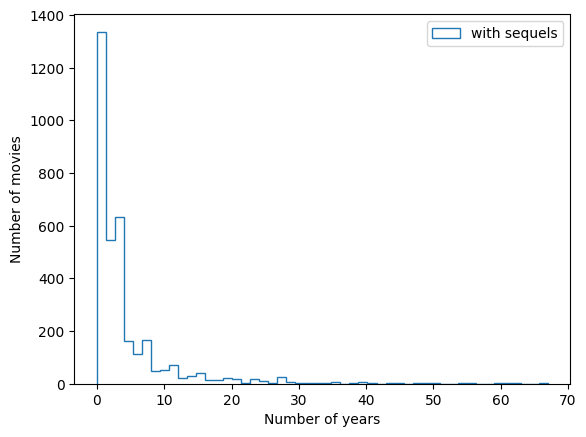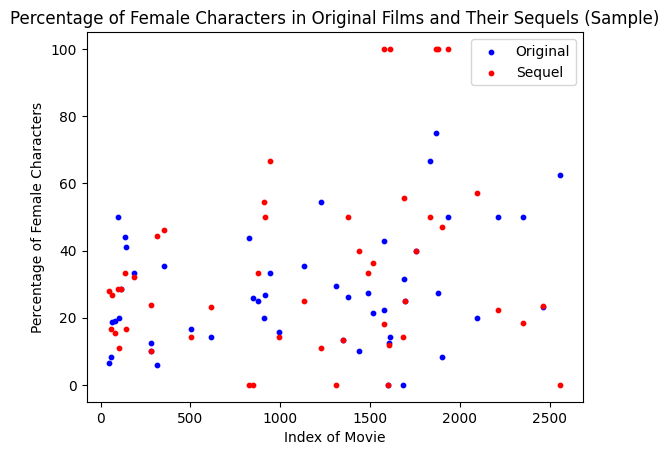A Story of Stories and their Sequels II
Attack of the Clones
Today, we invite you to join our exploration into the intriguing world of movie sequels and embark on an journey to unravel the mysteries behind feature films and their sequels.
Movies are a universal form of entertainment that appeal to audiences worldwide. However, have you ever been disappointed by a great movie that ends abruptly with a cliffhanger, especially when there is no sequel to resolve it? Or, if there is a sequel, it might turn out to be underwhelming...So, what determines whether a movie will have a sequel, and more importantly, what makes a sequel successful?In this project, we explore these questions using a comprehensive dataset of movies released between 1980 and 2016. Our aim is to identify the factors that influence whether a movie gets a sequel or not, and to conduct a comparison between the original films and their sequels.
The main sources of information that were used in this project are the CMU Movie Summary Corpus and Wikidata.
To start our analysis, we first identified which movies in our dataset had sequels and which did not. We used a combination of web scraping, data cleaning, and manual verification to enrich our dataset with sequel information. We then divided the movies into two groups: movies with sequels and movies without sequels. We compared these groups on various dimensions, with the goal to find out how these two categories differ, and what factors are associated with the success of movie sequels.
Examining the release dates of movies provided valuable insights into temporal trends as it shed light on the evolving dynamics within the film industry.
Nowadays, spectators feel overwhelmed by the continuous stream of sequels to their favorite movies. But does this trend truly reflect in the data? We analyzed the release dates of more than 80,000 films spanning from 1888 to 2016.
Indeed, our analysis of release years reveals a shifting landscape in the production and distribution of movies. Over time, there has been an increase in the overall number of movies reaching the screens. Furthermore, the number of movies with sequels has significantly risen, reflecting a possible growing popularity of franchise films. These types of movies now constitute an increasingly larger fraction of overall releases.
One of the most obvious metrics for comparing movies is their financial performance. We measured a movie's success by its worldwide revenue. Overall, movies with sequels demonstrated higher average and median revenues compared to their non-sequel counterparts. This trend could suggest that financially successful movies are more likely to receive sequels, aligning with the idea that audience interest and investment in follow-up productions are strong. It may also indicate that major studios have the means to promote their content more effectively.
We've observed that movies with sequels seem to gross more profits than regular one-shot films. Could this be due to the timing of their release? The end-of-the-year and early summer periods are widely recognized as the best times for theatrical releases, while January through March are considered as the worst.
Let's investigate if there is any significant difference in the release months between movies with sequels and those without sequels.
As we can see, there is no significant difference in the release schedules of movies with sequels and movies without sequels. On a side note, as expected, the months of October, November, and December account for nearly 45% of all films released in a year, while January, February, and March account for only 6%.
The deeper our analysis goes, the more similarities we find between movies with and without sequels.For example, both categories have comparable median runtimes, with sequels averaging 96 minutes and non-sequels 95 minutes.
Next, we examined the release patterns of movies based on their country of origin. Our dataset reveals that the majority of films are from the United States, followed by India and the United Kingdom.However, we also observed a higher likelihood of movies with sequels originating from the United States. This trend could be attributed to the larger production budgets, more substantial marketing expenditures, and extensive global distribution networks of American studios, factors that enable them to produce and promote sequels more effectively.

The extent of the United States' hegemony in movie production is clearly visible on this map. No other country comes as close to the US in terms of production volume.Additionally, it's noteworthy that Africa and South America (with the exception of Argentina) are almost entirely absent from the movie industry.
As we shifted our focus to the intrinsic characteristics of movies, we analyzed the genre composition of movies with and without sequels.Given the large number of subgenres in our dataset, direct comparison across different genres was challenging. To simplify our analysis, we selected the top 10 most frequent genres within our dataset. Each movie was then categorized under two main genres, derived from its subgenres.
As indicated by these charts, the "drama" genre is significantly more prevalent in one-shot movies. This could be attributed to the typically "self-contained" nature of such films. Other genres appear proportionally similar in both categories. Mainstream genres like "Action" and "Comedy" dominate the top positions in both charts.

The heatmap effectively visualizes the frequency of genre combinations. Our analysis reveals that movies with sequels are more likely to belong to the action, adventure, comedy, and fantasy genres. In contrast, movies without sequels tend to fall under the drama, romance, thriller, and horror categories. This trend suggests that movies rich in entertainment and spectacle are more inclined to have sequels, while original films often align with genres that emphasize emotional appeal and realism. Additionally, a statistical test we conducted confirms a significant difference in the genre distribution between movies with and without sequels.
Finally, our focus shifted to the character attributes of movies, primarily examining the age and gender of the actors. We calculated the median age of actors for each movie and determined the male-to-female actor ratio. The data, as illustrated in these graphs, indicates that movies with sequels tend to feature younger actors compared to movies without sequels. This trend might suggest a targeting of younger audiences by sequels, or it could reflect the greater appeal and longevity of younger actors in the film industry.
Unsurprisingly, men are significantly more represented than women in movies. Our analysis revealed no statistical variation in the gender ratio between movies with sequels and those without.

So far, our analysis has revealed no significant differences between films with and without sequels, except in one aspect: movies with sequels tend to generate more box office revenue than one-shots. This is a plausible finding, as successful and profitable ventures are naturally more likely to be repeated.However, we have reached the limits of what can be discerned from merely superficial data. The decision to produce a sequel may be influenced by factors external to the movie itself, such as the advertising strategies and distribution means employed by studios, as well as the notoriety of the actors involved. Popular figures starring in movies often attract more spectators.A further area of analysis that could prove insightful is the budget of the movie. It raises the question: Are well-funded movies more likely to achieve higher box office revenues, and consequently, are they more likely to have sequels?
To delve deeper into the differences between original films and their sequels, we meticulously crafted datasets that pair each original film with its subsequent sequel. This method ensured a thorough and comprehensive comparison. We paid special attention to mitigating potential biases caused by film sagas by treating each pair of films as independent entities.
The temporal analysis of release years reveals a notable trend: while many sequels are released immediately after their predecessors, others strategically opt for a delayed launch. This delay often capitalizes on nostalgia or evolving audience preferences.

Our approach focuses on mapping the progression of earnings from original movies to their sequels. This visual analysis is designed to uncover trends and variations in revenue growth or decline between original films and their sequels. Our findings reveal intriguing patterns. Contrary to popular belief that the first installment often outperforms its successors, we found that some sequels actually surpassed their original films in earnings. This suggests that certain sequels are exceptionally successful in captivating audiences and generating significant revenue. Furthermore, the scatter plot indicates a positive correlation between the earnings of original movies and their sequels, suggesting that sequels tend to replicate the financial success of their predecessors.
Analyzing mean durations offered insights into the relationship between a film's temporal structure and its success. Notably, most sequels showed a tendency towards maintaining identical or having extended durations compared to their predecessors. This pattern could indicate a more elaborate storyline or an effort to offer audiences a more immersive experience.
An examination of the median ages of characters in films revealed intriguing trends. Sequels frequently introduce younger characters, suggesting possible shifts in narrative themes or an intention to cater to a wider audience. This trend could also reflect a long-term vision for franchises with multiple sequels.

In conclusion, Part 2 of our data story offers a thorough exploration of the differences between original films and their sequels. The insights gleaned from financial, temporal, genre, and character analyses enhance our understanding of the various factors that influence the success and development of movie sequels. These findings are instrumental in guiding informed decision-making within the ever-evolving realm of filmmaking.
our data story reveals the complex factors that influence the success of movie sequels. Sequels are not just simple extensions of original films, but rather the result of a careful balance of financial decisions, cast choices, genre changes, and storyline developments. Specifically, our research questions led us to the following insights:
1. Comparative Popularity and Financial Performances:
Our financial analysis showed that sequels have diverse outcomes in terms of box office grossing. Some sequels outperformed their original films, defying the common assumption that originals are always more successful. This shows that the success of a sequel depends on more than just the popularity of its predecessor. Filmmakers need to account for various factors, such as changing audience tastes and optimal release timing, to maximize financial returns.
2. Cast Changes:
Our investigation into cast changes between original films and sequels highlighted the significance of maintaining character continuity. Sequels that kept most of their original cast were more appealing to audiences. This highlights the role of familiar faces in creating a connection between films, enhancing the overall success of a sequel.
3. Genre Dynamics:
The analysis of genre dynamics demonstrated that movies often undergo small genre changes between original films and sequels. While some genres remain consistent, others experience notable transformations. Interestingly, these genre changes do not always affect the success of sequels. Successful sequels were found across different genres, indicating that other factors, such as storytelling and character development, are more important for determining success.
In our quest to understand the dynamics of movie sequels, addressing the ethical dimensions inherent in the filmmaking industry is crucial. As we dissect the complexities of movie sequels, it's important to recognize the ethical responsibilities filmmakers hold. These responsibilities encompass fair treatment of cast and crew, ensuring equal opportunities, representing diverse voices, and considering the impact of storytelling on societal perceptions. Our analysis is not designed to offer a formula for creating successful movie sequels; rather, it aims to investigate the various factors influencing their production and reception. While recognizing that the film industry is largely driven by economic motives, we emphasize that it should also uphold artistic integrity and ethical values. We believe that the messages movies convey are a critical aspect, which is not adequately represented in our data story.